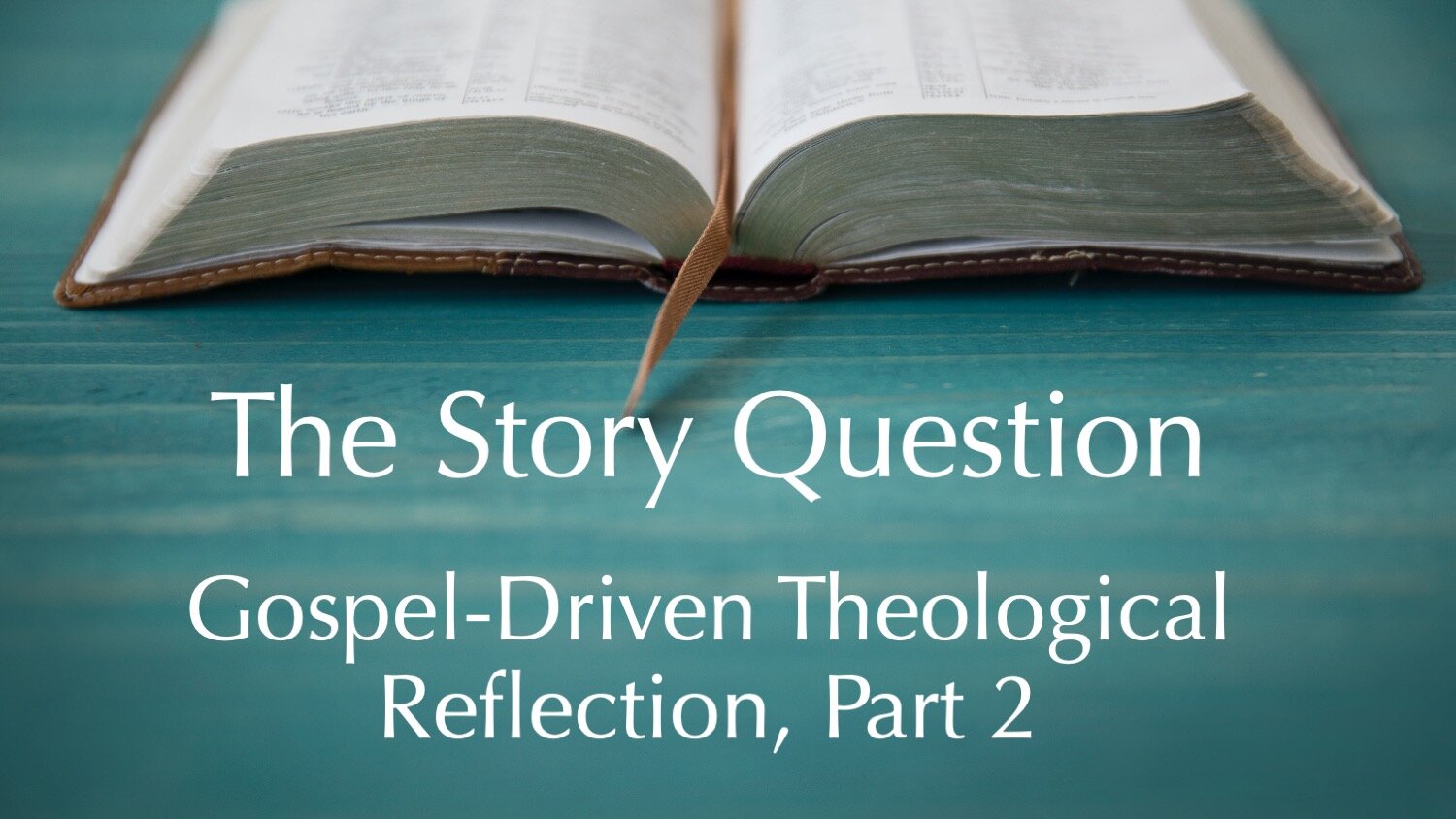
Gospel-Driven
Preaching for Transformation
Finding the path to Jesus in Every Sermon
Our sermons should be based in the Bible, but driven by the gospel, because even the Bible is not an end in itself. We have the Bible because God has a mission, and that mission is redemption. When we preach, we join him in this mission. We do not merely impart information. We offer transformation. And this transformation comes about only through the gospel.
The gospel is the story the Bible tells us. The story of a creator who made all things good, including human beings–made in his image and commissioned to exercise godly dominion over all the earth. The story of humanity’s rebellion against God, and the dreadful consequences not only for humans, but for all creation. This story climaxes in the coming of God himself in the person of his son Jesus, to live, die, and rise again, so that all things might be made new–even us.
If we preach for transformation, this is the story we must tell in every sermon. We tell it not merely as a story, but as the story. We call our hearers to believe it, to see themselves in it, to see the world through it, and to live in it every day, because it is in this story that we meet Jesus and experience his new creation.
The posts and articles in this section explore how we might tell the gospel story from every text, and proclaim Christ in every sermon.
We must tell the story — the grand narrative of the Scriptures that shapes our view of the world, of ourselves, and of history. Why? Because the single most important factor for forming identity, character, and purpose is how we answer the question, “In what story am I living?”
Every gospel encounter begins with brokenness. We can’t experience grace until we experience need. We can’t truly delight in Jesus’ sufficiency until we have felt the despair of our insufficiency. We experience the power of the gospel only to the extent we experience the powerlessness of our own lives.
Homiletical Conclusions are the last stop before we begin the actual work of shaping the sermon. As a matter of fact, we could say that the Homiletical Conclusions mark the starting point for building the sermon.
No sermon is complete that does not apply the truth of the biblical text to life. No gospel-driven theological reflection is complete that does not ask the Application Question.
As we seek the gospel-driven path from text to sermon, we have so far explored three questions. The fourth and final question provides a fitting culmination of all of these by applying the message in light of the gospel as well as the biblical metanarrative: How does this text invite us into God’s Story?
If we preach an entire sermon and never mention the Christ, can we claim that it is a Christian sermon? I have come to a firm conviction that our preaching should always, ultimately, be about Jesus. Surprisingly, this conviction is not necessarily shared by all Christian preachers.
As preachers, whether our objective is to evangelize the lost, to encourage the struggling, to comfort the suffering, or to disciple the growing, the path towards an experience of the gospel will always pass through an awareness of our own brokenness. Most often, this is where it will begin.
I have sought to make a case for “Big Story” preaching. If we are to make disciples who are faithful to the gospel in today’s world, we should lay the foundations of identity, worldview, mission and community by weaving the biblical metanarrative into everything we do. For us preachers, this begins with deliberately including in our sermon process a moment to expand the “story around the text” to include the entire Canon.
One of the greatest challenges of biblical preaching is blazing the trail from the ancient text to the contemporary world. Once you have diligently studied the historical and literary context, examined and analyzed the text itself, verified and amplified your thinking through some good research and come to some solid exegetical conclusions about what the text meant, how do you take the next step to determine what the text means for your particular group of hearers?
How do we go about intentionally establishing a ministry of “big story preaching?” We need a “big story homiletic” that could secure a metanarrative thread in every sermon. Such a homiletic will need to weave the big story into its theology, its hermeneutic, its cultural engagement, and its application of the text.
Must Christ be preached from every text? Is it realistic, or even right, to expect that every sermon should proclaim the Gospel? Can you be true to the original intent of the human author behind the text while also tying it to the grand intent of the divine author over the text? Graeme Goldsworthy would answer each of these questions with a resounding “yes!”
We are all shaped by a story. The question is, which story will it be? For disciples of Jesus, this life-shaping story is the Gospel. Before we turn to specifics of how to integrate the “big story” into our preaching, we should ask another question: What are the goals of Big Story Preaching?
How do we expect the grand narrative of the Scriptures to form disciples of Jesus? I will focus on four ways: The big story defines identity, shapes worldview, informs and guides mission, and creates community.
How do we make disciples in a post-Christian world?” I am convinced that the answer must begin with the story we tell. I’m not talking about merely “telling stories,” that people like to hear. We must tell the story — the grand narrative of the Scriptures that shapes our view of the world, of ourselves, and of history. Why? Because the single most important factor for forming identity, character, and purpose is how we answer the question, “In what story am I living?”
Is it realistic to say that every sermon should be gospel-driven? What do we do when the text doesn’t seem to be about the gospel at all? Do we just bend it and squeeze it until a gospel presentation oozes out? Does this mean that every message should be evangelistic? Shouldn’t some sermons just teach, exhort, encourage, or comfort?
The term “text-driven” has emerged in the past few years to describe truly faithful preaching. I understand the intent, but I disagree with the terminology. If our ultimate purpose in preaching a sermon is the thing that drives it, our preaching should be driven by something other than the text. Our preaching should be “gospel-driven.”
When a preacher who has communicated the Gospel faithfully and effectively for over three decades to secular New Yorkers writes a book on preaching, we should all sit up and take note. I’ve never known Tim Keller to disappoint, and his new book on preaching is no exception.
What would make your list of qualities of a good sermon? For some, the priority is on the substance of the message. Others recognize that it doesn’t matter what you intend to say if you can’t say it clearly enough for the message to be understood. For others, interest is paramount — whatever the sermon is, it should not be boring!
Which perspective is correct? Like many either-or questions, the answer is “yes!” All of the above! So, here is my current list …
















This is the prophetic function of preaching: naming our brokenness. Peeling back the layers of our denial, our deflection, and our self-deception to give a name to the self-destructive inclination of our hands, our heads, and our hearts. Why does this matter? Because only when our rebellion is named can we repent of it. And only when we repent can we experience redemption. And only through redemption can we enjoy restoration. Naming our brokenness is the at the trailhead to the only possible path to wholeness, healing, and grace.